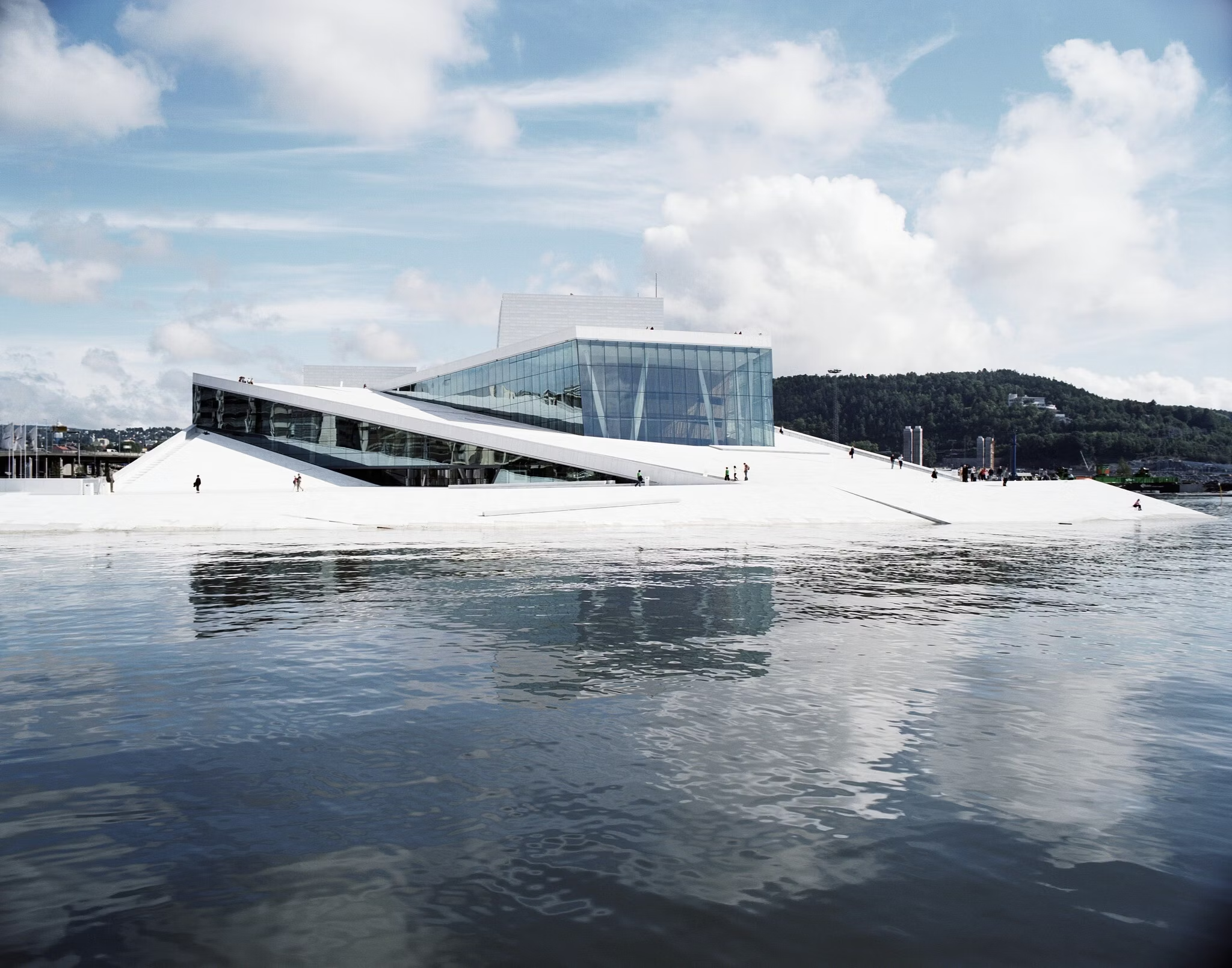Norwegian National Opera and Ballet by Snøhetta.
In the heart of Oslo, rising gracefully from the edge of the fjord, stands the Norwegian National Opera and Ballet, a masterpiece of modern architecture designed by the world-renowned Snøhetta architecture firm.
Completed in 2008, this striking structure is more than just a home for opera and ballet; it is a symbol of Norway’s cultural resurgence and a testament to the country’s commitment to integrating architecture with nature.
The design of the Opera House embodies the essence of Scandinavian minimalism while celebrating the grandeur of the performing arts. Snøhetta’s vision was to create a space that is open, accessible, and inclusive—a building that invites not only the art enthusiasts but the entire community to engage with the space. This vision is beautifully realized in the Opera House’s design, where the boundary between the building and its surroundings blurs, offering a seamless connection between the natural and the man-made.
The Vision Behind the Design
The Norwegian National Opera and Ballet was conceived as more than just a performance venue; it was envisioned as a cultural landmark that would embody the values and identity of Norway. Snøhetta’s approach to the project was deeply rooted in the idea of accessibility and inclusiveness, aiming to create a space where the boundaries between the building, the city, and the natural environment dissolve.
The design is a reflection of Norway’s democratic ideals—open to all, where art meets life seamlessly. The angled roof, designed to be walked upon, invites the public to engage with the building physically, offering breathtaking views of the Oslo Fjord and the city. This gesture symbolizes a connection between the people and the arts, where everyone is invited to participate, whether as a spectator or simply as a visitor enjoying the architecture.
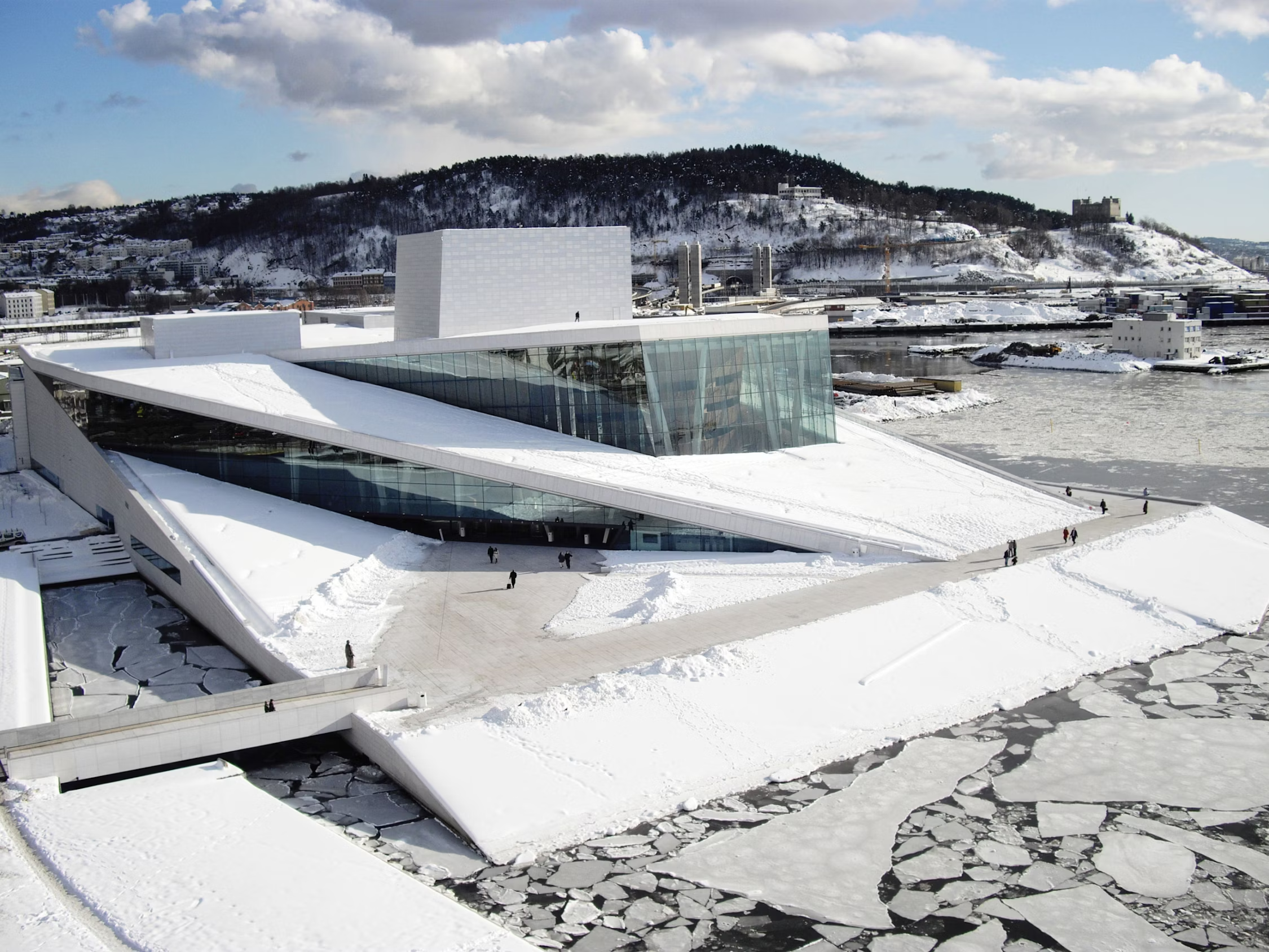
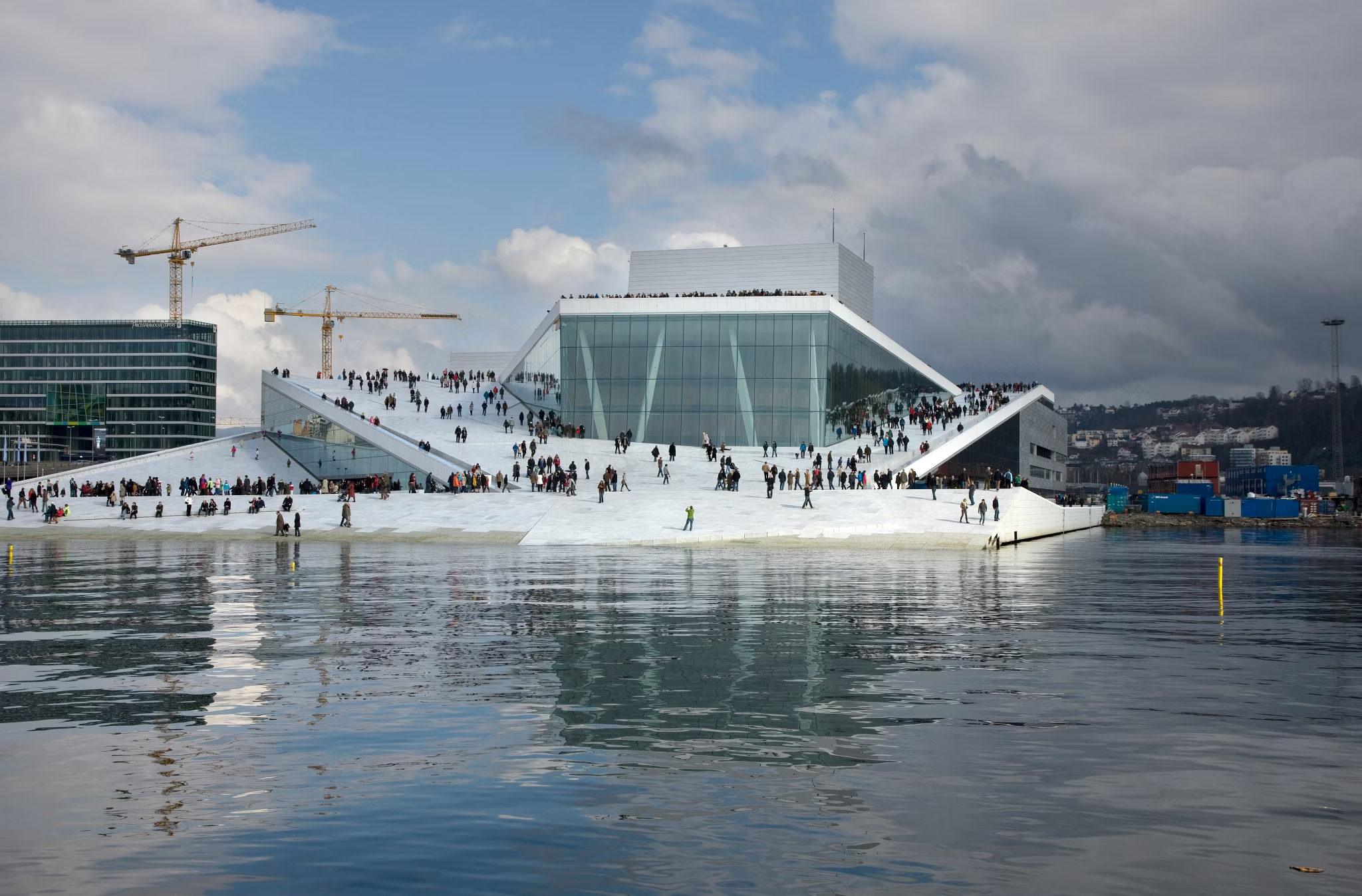
Snøhetta’s design also draws inspiration from the surrounding natural landscapes of Norway. The building’s lines and forms evoke the glaciers and the rugged coastal environment, blending modernity with the timelessness of nature. This vision aligns with a broader Scandinavian design philosophy that values simplicity, functionality, and harmony with the environment.
The Opera House stands as a testament to how architecture can serve as a cultural bridge, connecting the traditional with the contemporary, the local with the global. It is a building that is not just seen, but experienced, reflecting Norway’s cultural aspirations on the world stage.
Architectural Features and Materials
The Norwegian National Opera and Ballet is an architectural marvel that merges form, function, and the natural environment. The exterior of the building is a striking composition of white Carrara marble and glass, creating a seamless connection with the surrounding Oslo Fjord and reflecting the crisp, clean aesthetic synonymous with Scandinavian design.
The building’s most iconic feature is its angled roof, which gently slopes down to meet the water, inviting visitors to walk on its surface. This roof is not just a design element but a public space, where people can gather, stroll, and enjoy panoramic views of Oslo. The roof’s geometry echoes the natural landscape of Norway, reminiscent of glaciers and mountainous terrain, making the building feel like an organic extension of the environment.
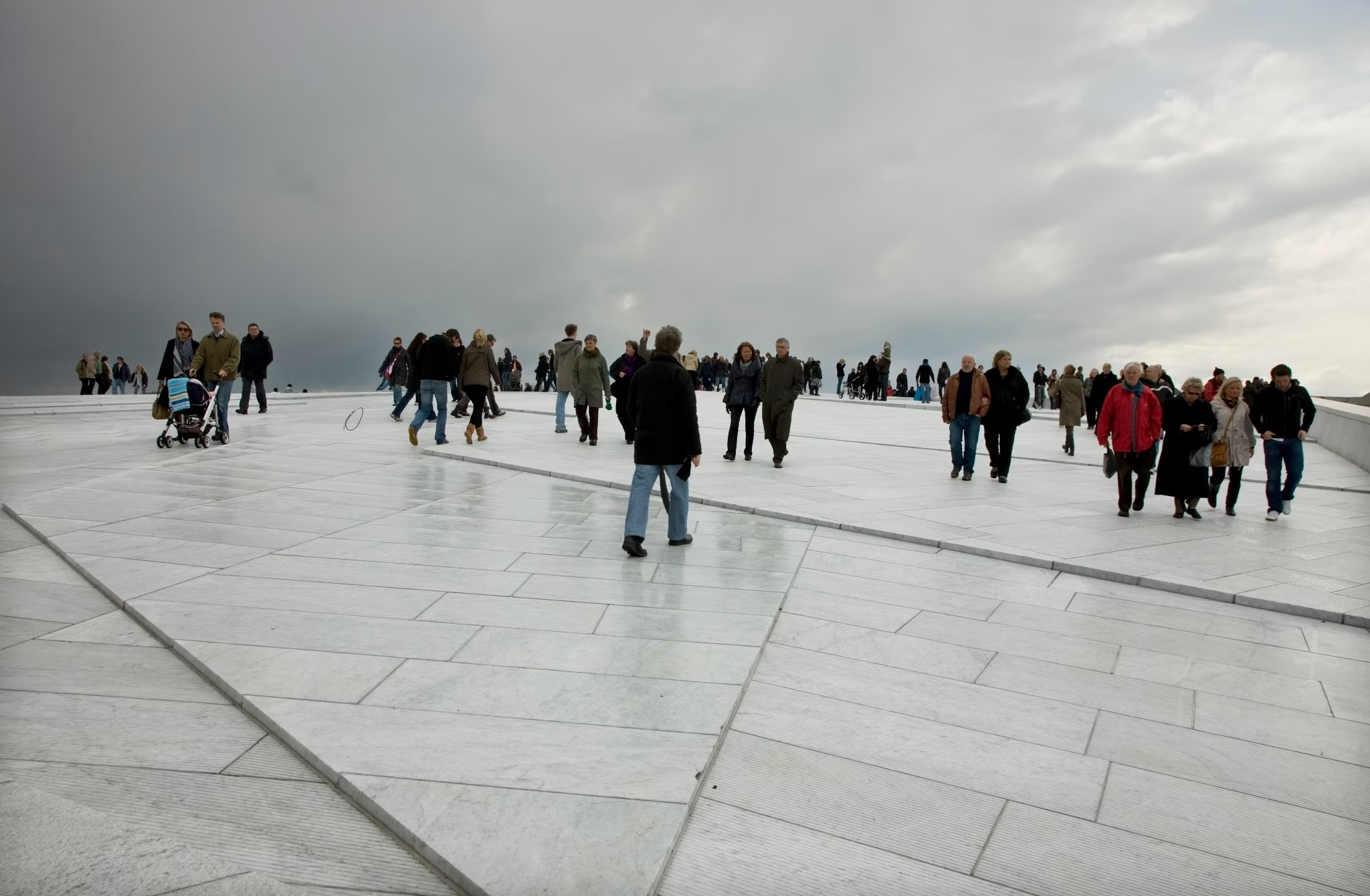
Inside, the use of warm oak contrasts with the cool exterior, creating an inviting atmosphere that resonates with the warmth of Norwegian culture. The interior spaces are designed to enhance the visitor’s experience, with the main auditorium offering state-of-the-art acoustics, ensuring that every performance is experienced in perfect clarity. The careful selection of materials—glass, marble, and wood—reflects a balance between durability, beauty, and the sustainability that is central to the building’s design philosophy.
This architectural approach not only defines the building’s aesthetic but also contributes to its role as a vibrant public space, reinforcing the connection between the community and the cultural activities housed within.
The Interior Experience
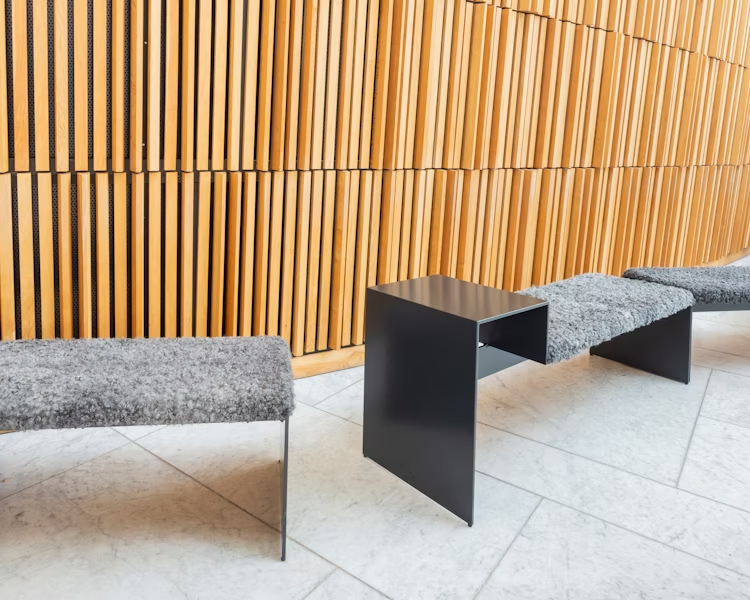
Stepping inside the Norwegian National Opera and Ballet, visitors are immediately enveloped in a space where architecture and artistry converge to enhance the cultural experience. The interior design, characterized by the extensive use of oak, creates a warm and inviting atmosphere that contrasts with the cool exterior.
This choice of material not only adds a sense of intimacy but also serves to acoustically enhance the performance spaces.
The main auditorium is a masterpiece in itself, designed to deliver an unparalleled auditory experience. Snøhetta’s attention to detail is evident in the way the interior architecture seamlessly blends form and function. The undulating oak walls of the auditorium are not just visually stunning but are also meticulously crafted to optimize sound, ensuring that every note and word is heard with clarity and precision.
Beyond the performance spaces, the interior design emphasizes accessibility and openness: the wide, sweeping staircases and expansive glass facades allow natural light to flood the interior, creating a dynamic interplay between light and shadow throughout the day. This openness invites exploration, making the Opera House not just a venue for performances but a public space that encourages interaction and engagement.
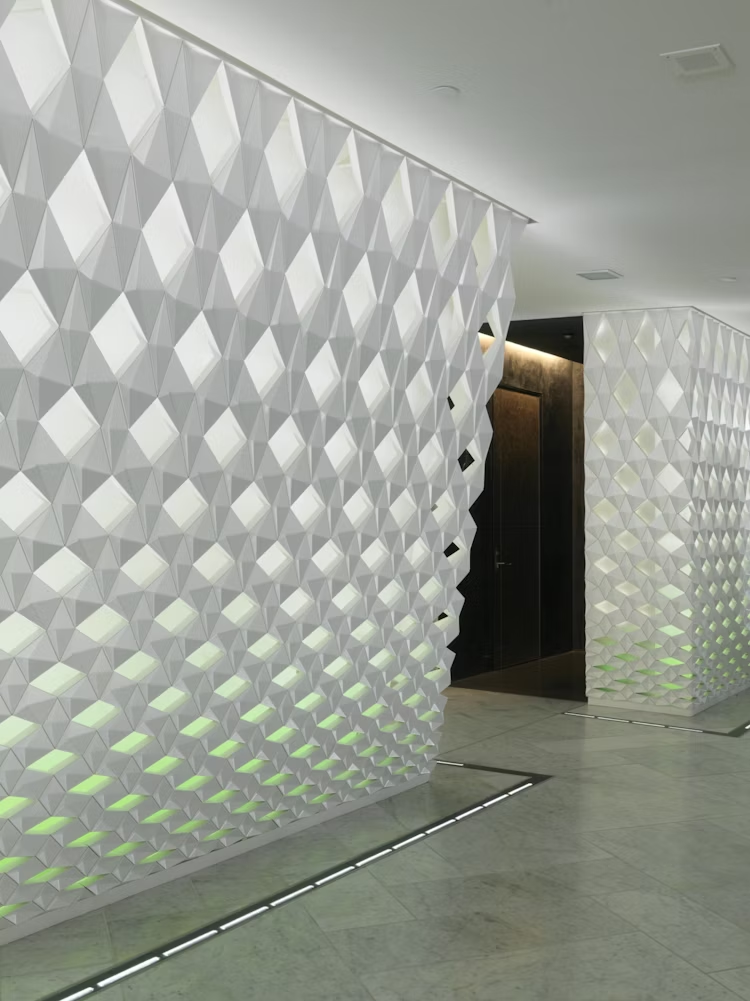
Whether experiencing a world-class opera, ballet, or simply exploring the building, visitors are treated to an interior that resonates with the same elegance and attention to detail that defines the Norwegian National Opera and Ballet as a whole.
Cultural and Social Impact
The Norwegian National Opera and Ballet has become a vital cultural hub and a catalyst for the revitalization of Oslo’s Bjørvika neighborhood. Since its completion, the building has transformed the area from an industrial port to a vibrant urban space, attracting locals and tourists alike. The Opera House serves not only as a venue for world-class performances but also as a public gathering place, fostering community engagement and cultural interaction.
The building’s accessible design encourages a sense of ownership among the public. The rooftop, open to all, has become a popular spot for everything from casual walks to public events, reinforcing the idea that the Opera House belongs to everyone. This democratization of space has had a profound impact on Oslo’s social landscape, making the arts more accessible and integrated into daily life.
Moreover, the Opera House has significantly boosted Oslo’s international profile, positioning the city as a destination for cultural tourism and architectural excellence. It has set a precedent for how cultural institutions can contribute to urban regeneration and social cohesion, serving as a model for cities worldwide.
Sustainability and Innovation
The Norwegian National Opera and Ballet exemplifies Snøhetta’s dedication to sustainability and architectural innovation. While the building uses high-quality materials like white Carrara marble for its exterior, which is sourced from Italy due to its durability and aesthetic qualities, the overall design incorporates numerous sustainable practices. For example, the building’s large glass facades allow for abundant natural light, reducing energy consumption. Additionally, its integration with the Oslo Fjord emphasizes a respectful relationship between the built environment and nature.
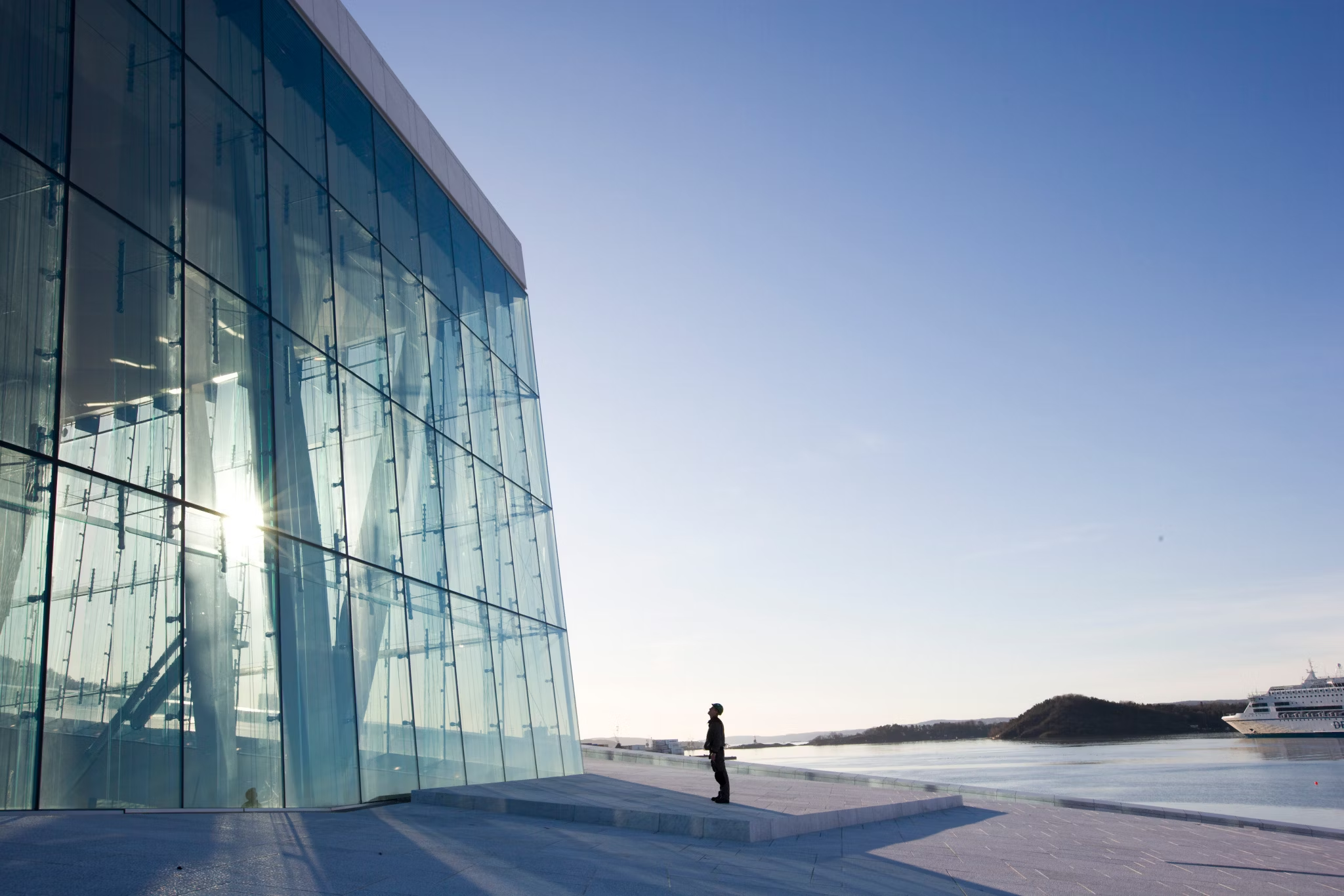
Snøhetta’s innovative approach to this project also extends beyond material choices. The firm carefully balanced aesthetic considerations with functional requirements, ensuring the building not only serves as a cultural beacon but also minimizes its environmental impact. The design includes advanced energy-efficient systems and considerations for long-term sustainability, reinforcing the idea that great architecture can—and should—work in harmony with the environment.
Our take
The Norwegian National Opera and Ballet stands as a powerful testament to the transformative potential of architecture. Through Snøhetta’s visionary design, the building has become a symbol of Norway’s cultural and architectural identity, blending innovation with tradition, and sustainability with elegance. It is more than just a venue for the arts, it is a public space that invites interaction and fosters a deep connection between people, the city, and the environment.
This iconic structure not only enhances the cultural landscape of Oslo but also sets a global standard for how architecture can elevate and integrate into the fabric of a city.
The Norwegian National Opera and Ballet is a living testament to the idea that great design transcends function, becoming a part of the cultural and social narrative of its time.
More info about the project, on the Snøhetta’s website.
Discover more from Lagmarks Design
Subscribe to get the latest posts sent to your email.
